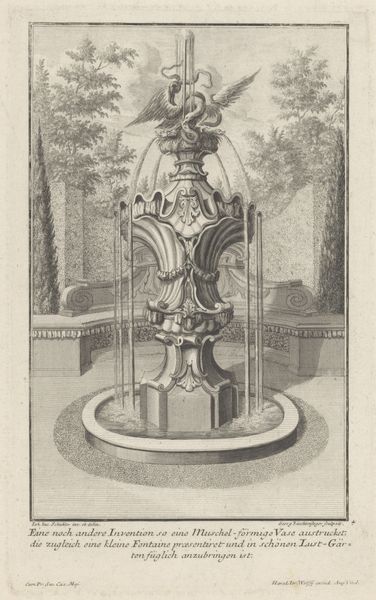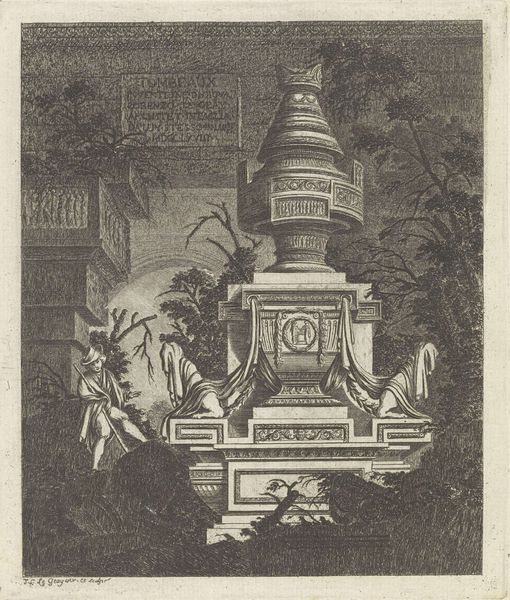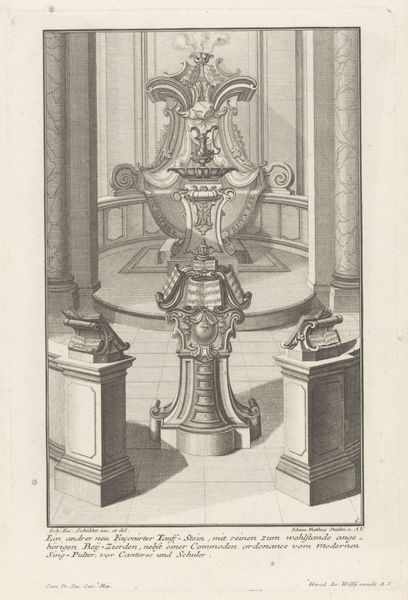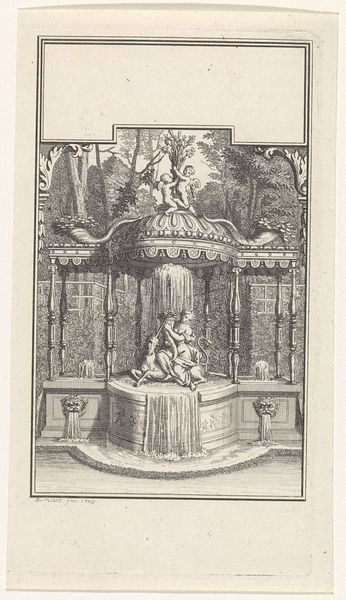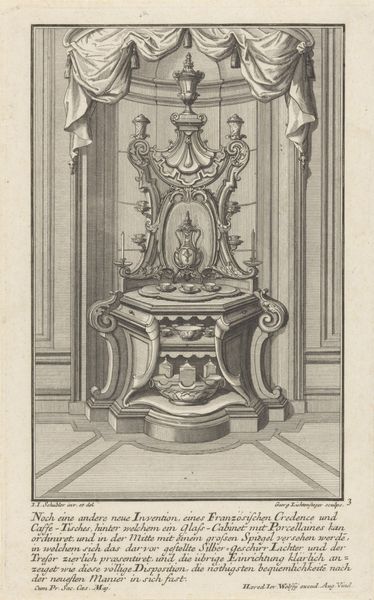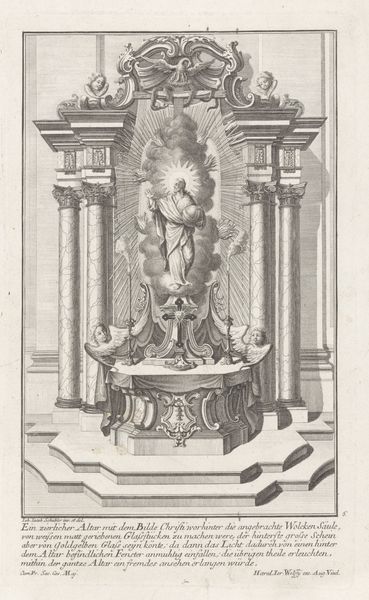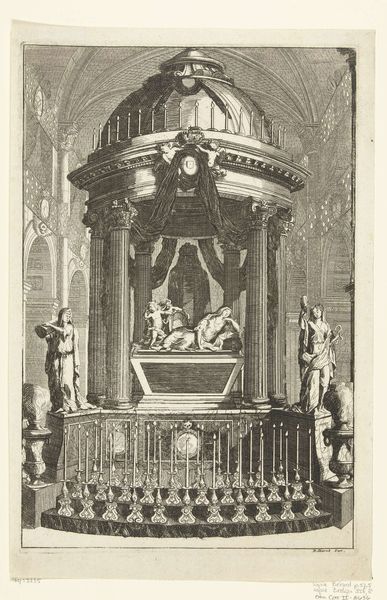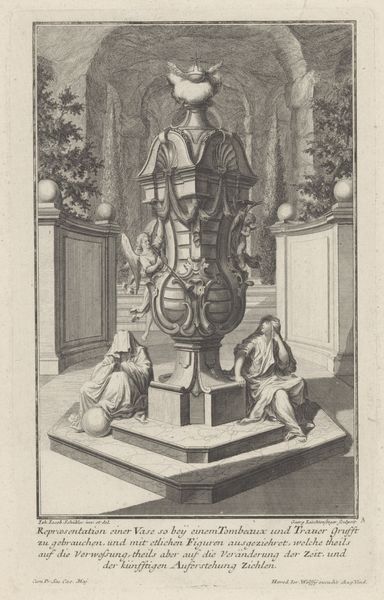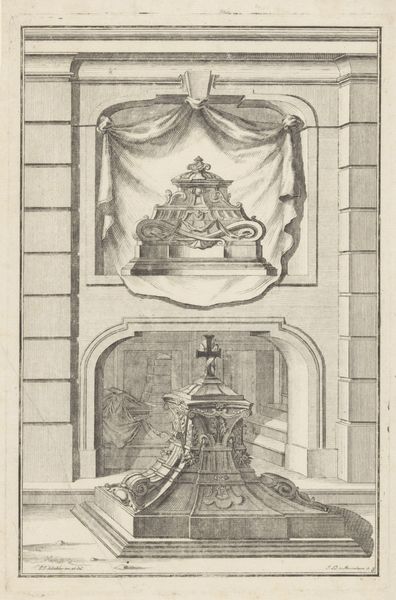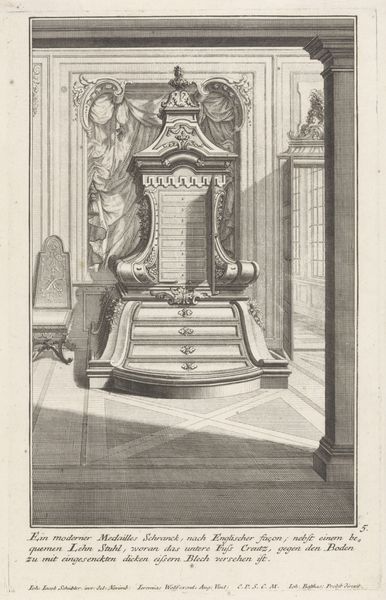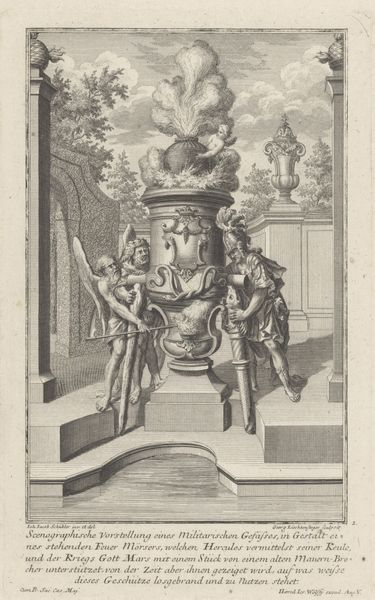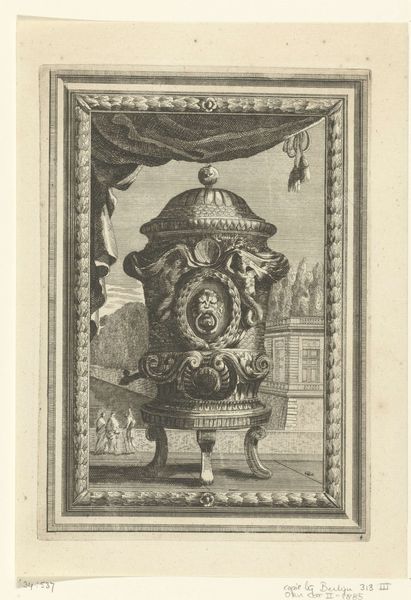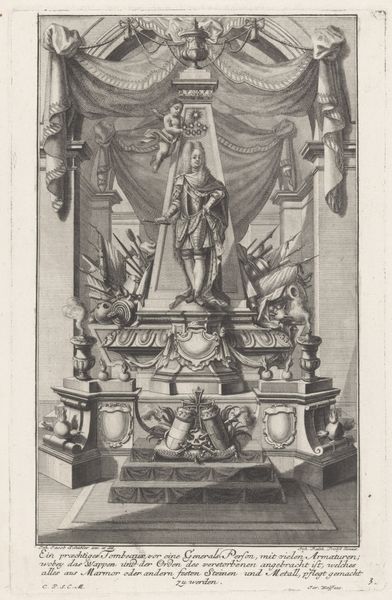
print, engraving, architecture
#
baroque
# print
#
old engraving style
#
landscape
#
history-painting
#
engraving
#
architecture
Dimensions: height 289 mm, width 183 mm
Copyright: Rijks Museum: Open Domain
Curator: Welcome. I’m excited to discuss this engraving titled "Tuinhuis en fonteinen" created after 1724. It’s the work of Johann Matthias Steudlin. Editor: It's immediately striking. A landscape scene dominates, but there’s also this strange almost theatrical element—like we’re peeking at a stage set of water features, bathed in baroque idealism. There's something unsettling about it, as if the controlled nature is fighting against a darker, perhaps chaotic background. Curator: Yes, that controlled artifice is central to understanding these images. Water, of course, has profound symbolic weight across many cultures—life, purification, even the subconscious. Fountains elevate this element, bringing movement, sound and even a sense of magic through engineering and artifice. Waterfalls become liquid architecture. In garden design, as this image highlights, the iconography blends with social aspiration. It is not mere beautification but also demonstrates power and dominion over nature itself. Editor: I agree it highlights a complex relationship between humans and nature. It's easy to view these gardens as just a retreat for the wealthy, but what does it mean to confine natural forces into ordered, symmetrical displays while outside, in broader society, there may be other forms of confinement, be they class-based or even racially motivated exclusions from those very spaces? This print doesn’t address these tensions head-on but by choosing such imagery, we can perhaps start to interrogate the very structures it reflects. Curator: A valid and necessary point to raise. Steudlin, whether consciously or not, participates in this dynamic by preserving this particular vision. The very act of making it a print extends its influence beyond those physically present. It’s memory and aspiration formalized and circulated. A powerful image in its design and execution but not always in its ideology, perhaps? Editor: Exactly. Understanding how artworks function within the wider historical power structures and inequalities that shaped them, can allow us to better examine both present day social realities, and the complex layers embedded within our history. I think the print highlights that there were always multiple stories happening.
Comments
No comments
Be the first to comment and join the conversation on the ultimate creative platform.
